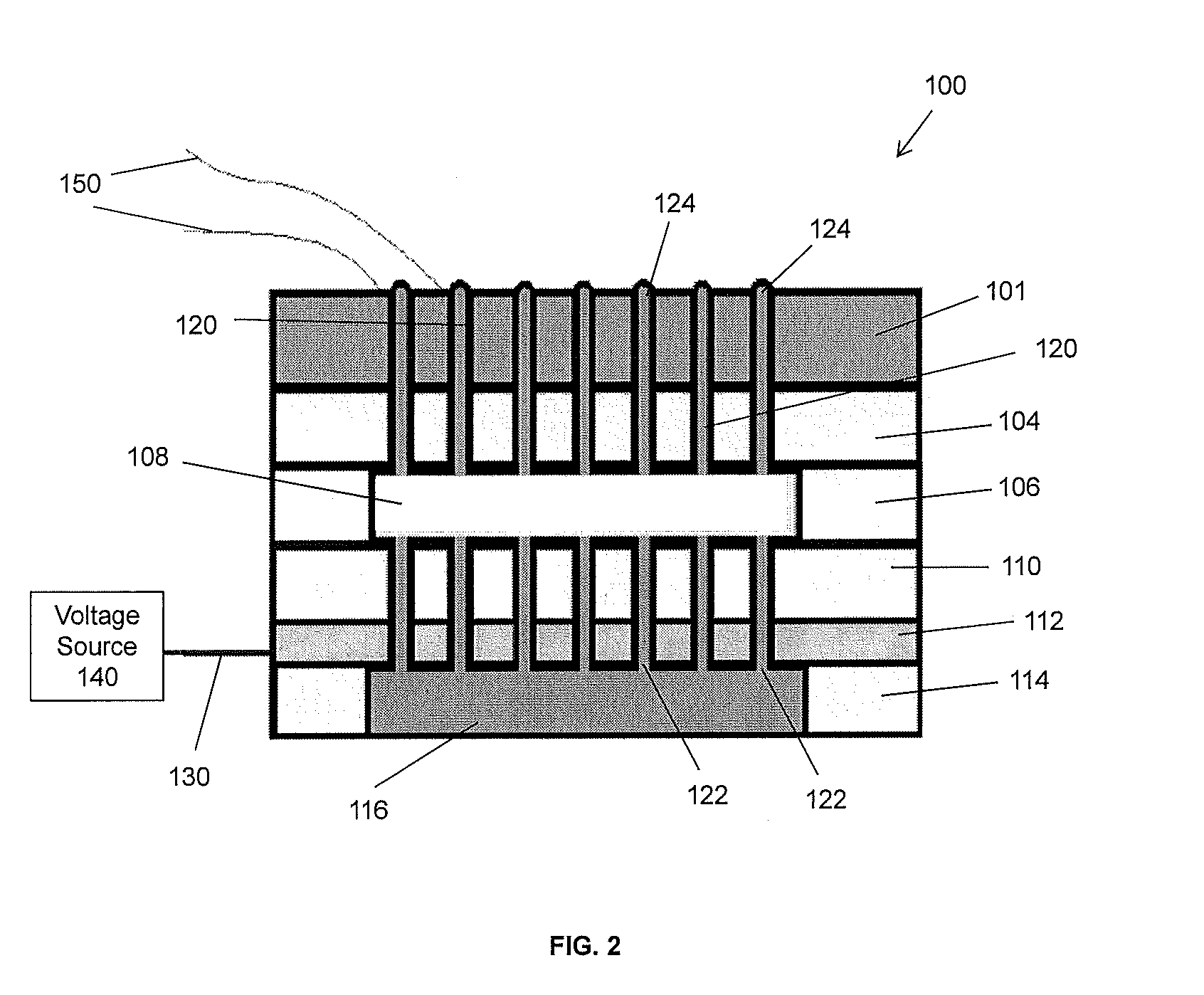System and methods for moving objects individually and in parallel
a technology of moving objects and parallel motion, applied in the field of electric vacuum system and methods, can solve the problems of scale to objects with millions of components, assembly rate and cost is the ability to assemble multiple components, and the number of such components is likely to grow rapidly. , to achieve the effect of convenient parallelizability and suitability
- Summary
- Abstract
- Description
- Claims
- Application Information
AI Technical Summary
Benefits of technology
Problems solved by technology
Method used
Image
Examples
Embodiment Construction
[0023]As shown in FIG. 1 and FIG. 2, the electro-osmosis system 100 according to the present invention includes various layers of components. One component is in the form of a printed circuit board 101. The printed circuit board 101 has an array of plated fluidic passageways 102. Fluidic passageways 102 can be of any diameter and are plated with a conductive material such as tin / lead (Sn / Pb) plating or a base of copper with a Sn / Pb coating creating individual electrodes 103. Any individual or set of individual objects can be picked up according to how the printed circuit board 101 is oriented and programmed.
[0024]Any center-to-center distance between adjacent fluidic passageways 102 in the array is contemplated. In one embodiment, the printed circuit board 101 has a 5×5 array of 508 μm diameter fluidic passageways with a 0.66 mm diameter Sn / Pb plating and a center-to-center distance between adjacent fluidic passageways at 2 mm. However, any sized array of any sized diameter passagew...
PUM
 Login to View More
Login to View More Abstract
Description
Claims
Application Information
 Login to View More
Login to View More - R&D
- Intellectual Property
- Life Sciences
- Materials
- Tech Scout
- Unparalleled Data Quality
- Higher Quality Content
- 60% Fewer Hallucinations
Browse by: Latest US Patents, China's latest patents, Technical Efficacy Thesaurus, Application Domain, Technology Topic, Popular Technical Reports.
© 2025 PatSnap. All rights reserved.Legal|Privacy policy|Modern Slavery Act Transparency Statement|Sitemap|About US| Contact US: help@patsnap.com



